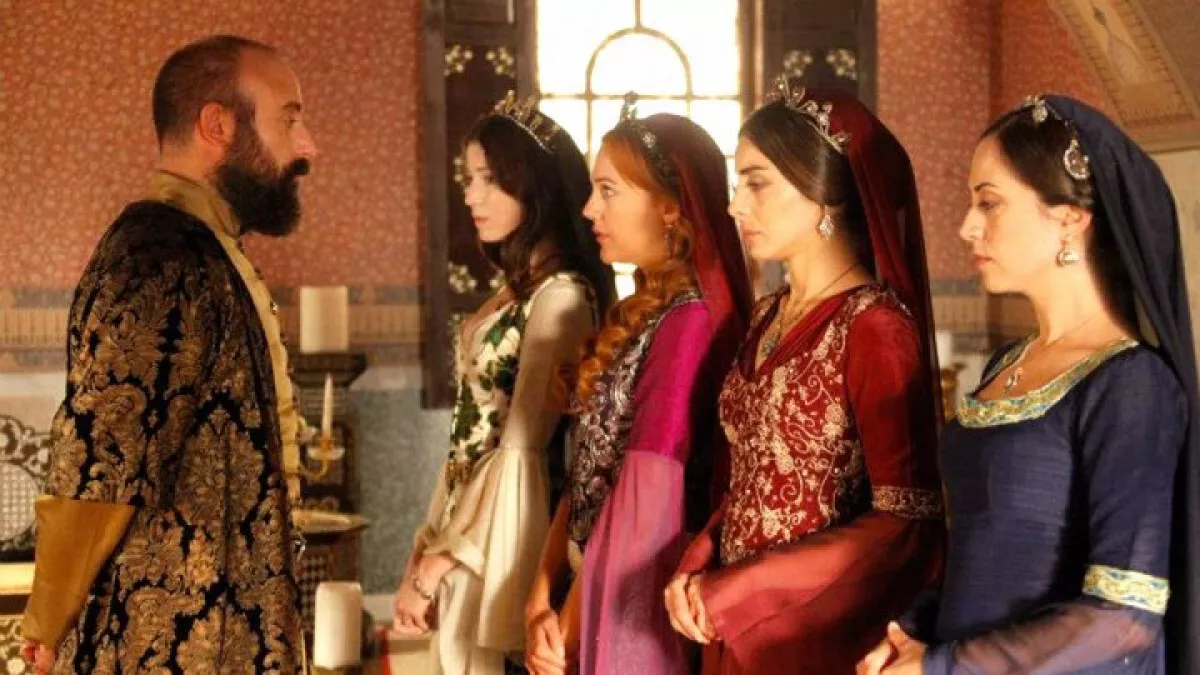
In the famous series "Magnificent Century," viewers are shown only a few important figures from the harem of the Ottoman ruler Suleiman – Gülfehm, Mahidevran, and Hürrem. This was reported by Upl.uz.
However, the historical reality was much more complex and extensive. Suleiman's harem was a separate world, distinguished by its own rules, hierarchy, and numerous women.
It was not just a corner of the palace, but a "city within a city," where hundreds of women lived, each having their own place in a complex system. Complete information about the exact number of women in the harem has not been preserved, but historians have managed to reconstruct an approximate picture based on archival documents.
Researcher Leslie Pierce, studying the financial reports of that time, found that approximately 300 women lived in the harem. Their statuses varied: some were simple servants, while others were close to Suleiman.
The salaries of the women in the harem depended on their rank. For example, simple servants earned about 6 asp per month, apprentices around 60 asp, while the concubines received between 100 and 200 silver coins.
Suleiman's closest favorites had significantly higher incomes. Out of the 300 women, only 160 lived directly in the Topkapi Palace, and 17 concubines were part of the inner circle.
Interestingly, after marrying Hürrem, Suleiman paid less attention to other women. Many concubines later became part of his sons' harems, and the palace hierarchy was maintained.
This indicates that Hürrem fundamentally changed Suleiman's life and the traditions of the harem. Different Ottoman rulers adopted various approaches to managing the harem.
For instance, Suleiman's son Selim II noted that there were between 365 and 500 women in his harem. This indicated his status and required significant resources.
Additionally, Sultan Ibrahim I rarely left the harem and was always accompanied by concubines. Murad III, although deeply in love with his wife Safiye Sultan, significantly expanded the harem.
After his death, he left behind 19 sons and over 30 daughters, indicating the size of the harem. The Ottoman harem was not just a place for the sultan's pleasures but a complex structure.
Each woman had her own duties: some took care of household chores, some raised children, while others were occupied with palace intrigues. New girls were brought from various corners of the empire, chosen not only for their beauty but also for their abilities, lineage, and political connections.
The life in the harem was governed by strict rules. Concubines who did not enter the sultan's inner circle waited for their turn for years or moved to other harems.
Women who had children often held high status and influence. For example, Hürrem was not only Suleiman's wife but also played a significant role in politics, which was a rare occurrence for that time.
Historians find it difficult to determine the exact number of harems, as many documents have been lost. However, records of salary payments help to understand the size of the harem.
This confirms the wealth of the Ottoman Empire. Leslie Pierce's research is based on such data and is one of the main sources for understanding the structure of the harem.
In Suleiman's harem, there were not only many women but also a complex management system. Senior concubines and apprentices controlled the order, while the juniors carried out daily tasks.
Thus, the harem of the palace







